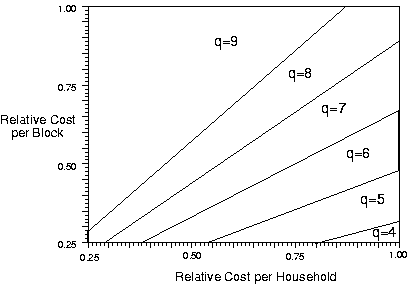
As well as in the design of the LFS, there is mathematics involved in determining the most efficient estimation approach at a variety of levels. At the larger-area level, stable estimates are derived by comparing the survey proportions, for people in particular labour-force categories and demographic groups, to predetermined population `benchmarks' for those demographic groups. Initially these benchmarks are based on the 5-yearly population-census data, with adjustments for under-enumeration. They are updated monthly to take into account births, deaths and migration.
This use of benchmarks...

The survey sample is divided into 8 separate, independent subsamples of households, each representative of the full population in its own right. To reduce respondent load, each month one subsample is `rotated-out', with a new sample `rotated-in'. Thus a selected household is included in the sample for 8 consecutive months. Rotation-into-sample of atypical subsamples results in volatility of the survey estimates. One means to reduce this volatility is to benchmark separately the 8 rotation-groups of the survey. There is a cost however, in terms of the number of separate demographic groups that can be supported within a given sample size. A compromise must be struck between `fine classification' and `separate benchmarking' for rotation-groups.
Another option being investigated for feasibility is the use of composite estimation, for estimates of movement. Under this approach the rotation-groups common to two monthly samples would receive a larger weight, in the estimates of movement, than those rotated-in and rotated-out. This leads to more efficient estimates of movement, but at the expense of additivity of movements and levels.
A third issue is to optimise the demographic and geographic domain subgroups for which different benchmarks are applied. We note that, as for the separate rotation-group benchmarks, there is a trade-off in moving to finer categories of benchmarks.